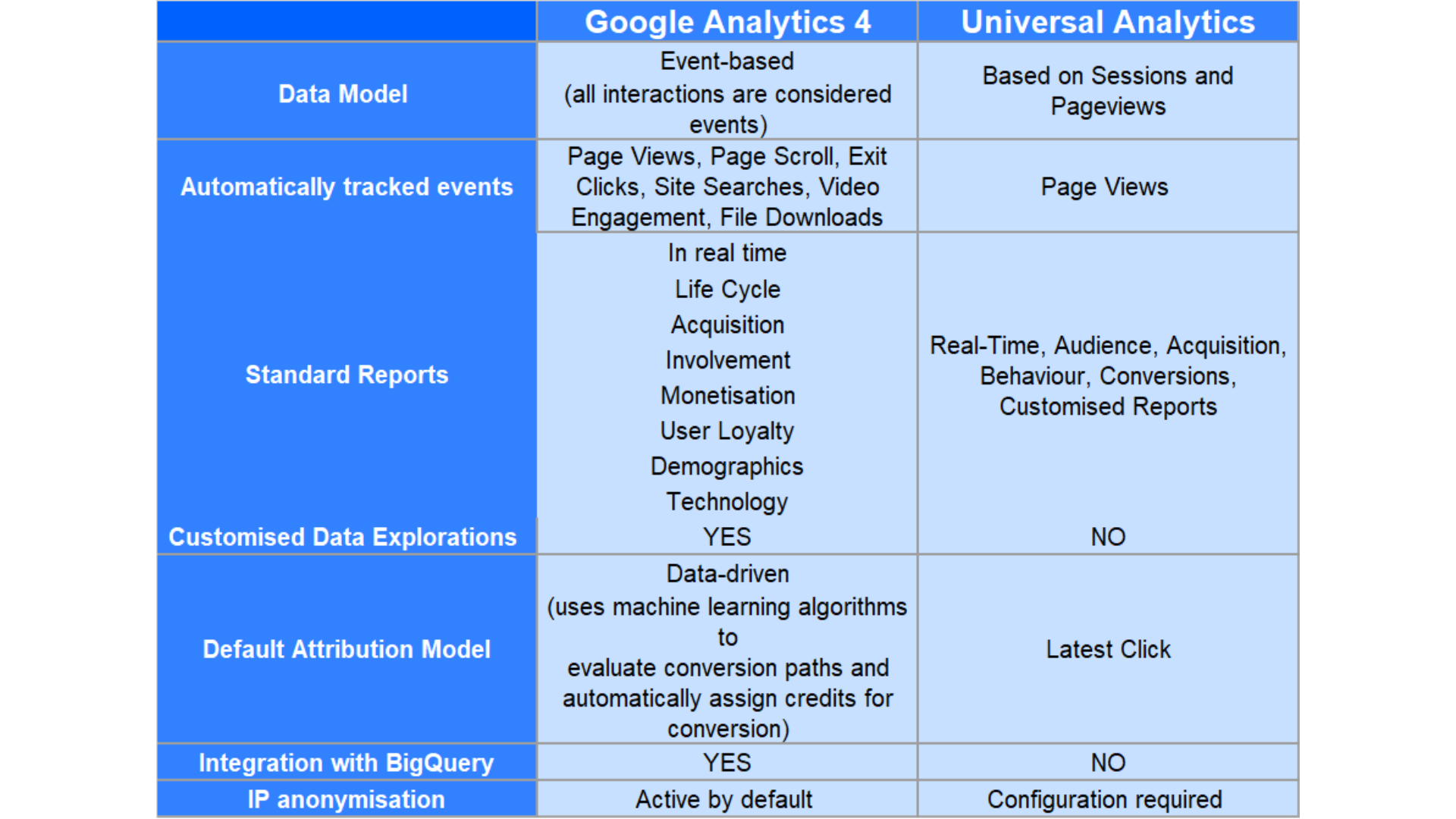GA4: pros and cons of the new web analytics platform
Let's explore the capabilities of Google's new tracking system to understand how it is redefining data analysis and what benefits it will bring to business.

A lot of noise for nothing, one might say. The replacement of Google's venerable Universal Analytics was announced a year ago now, but it is only since a couple of months that we have been able to assess the effects (and possible benefits) of GA4, Google's new web analytics platform, introduced in July 2023 and declared by experts and industry websites as a real revolution in the way online users are monitored.
Marketing benefits
The main difference, the most disruptive evolution of GA4, is on the data model: whereas UA was based on sessions and user information, GA4 is centred and focused on events. All user interactions become an event, which allows for in-depth insight into the behaviour of customers and prospects. With data collection based on events and no longer on sessions, it is possible to do cross-platform analysis, with greater flexibility and precision, being able to follow the path of users in order to make more accurate predictions about their next purchases.
With a benefit for ROI as well: many GA4 functions are in fact designed precisely to improve the return on investments made in digital marketing and advertising. In fact, many of the new features introduced aim to increase integration with Google Ads. In this way, companies and marketing departments can have a more precise global view of the results of the investments made, both advertising and non-advertising.
Novelties and differences compared
Let's start with the novelties: the most interesting is the increased integration and interconnection between all Google properties, such as Search Console, Tag Manager or Google Ads. This, on one hand, allows data processing to be speeded up with more accurate control, but above all it allows predictions to be made about user behaviour on the basis of the data collected (under certain conditions)
Google claimed to have made substantial changes to its web data monitoring and analysis system for a very specific reason: to move towards greater standardisation and automation of reports and events, as well as towards the absolute centrality of machine learning. Big G's aim is to offer a more intelligent and predictive tool than in the past, with the possibility of offering marketers and data analysts new, quite refined measurement and integration tools.
The main difference between Universal Analytics and GA4 is the measurement model used: the previous system used a measurement model based on sessions and page views; in contrast, Google Analytics 4 uses a measurement model based on events and parameters. The core principle of the new system is that each interaction can be captured as an event, and thus the same action can be calculated using and overlapping multiple parameters.
Summary chart of the main differences

However, there are not only positives. Many complain that GA4 is not very "manageable", especially in the handling of complex analyses related to ecommerce portals. On the other hand, it has to be said that since the July go-live, updates, additions and corrections have been released continuously in order to improve performance.
Contact us for more information
At mashfrog we are always up-to-date with the latest developments in the digital world, not making choices dictated by emerging technologies, but ready to adopt the most convenient and useful solutions for our customers and partners. Whether it is GA4, Matomo or Piwik (other analytics systems), the important thing is to be able to read the data in order to interperate user behaviour and offer better services and/or products, thus increasing the value of your marketing activities and the return on your investments.
If you would like to learn more about digital analysis, monitoring and data representation, please contact us and we will be happy to tell and explain what we can do for you.


